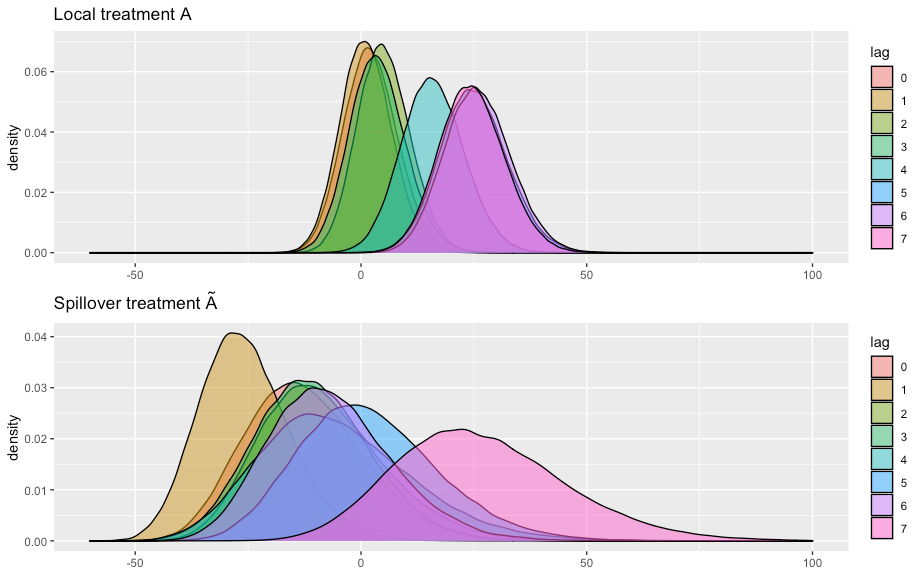Understanding the effects of interventions, such as restrictions on community and large group gatherings, is critical to controlling the spread of COVID-19. Susceptible-Infectious-Recovered (SIR) models are traditionally used to forecast the infection rates but do not provide insights into the causal effects of interventions. We propose a spatiotemporal model that estimates the causal effect of changes in community mobility (intervention) on infection rates. Using an approximation to the SIR model and incorporating spatiotemporal dependence, the proposed model estimates a direct and indirect (spillover) effect of intervention. Under an interference and treatment ignorability assumption, this model is able to estimate causal intervention effects, and additionally allows for spatial interference between locations. Reductions in community mobility were measured by cell phone movement data. The results suggest that the reductions in mobility decrease Coronavirus cases 4 to 7 weeks after the intervention.
翻译:理解干预的效果,例如对社区和大型群体集会的限制,对于控制COVID-19的传播至关重要。传统上使用可感知的传染性复苏模型来预测感染率,但不能对干预的因果关系提供洞察力。我们提议了一个随机模型,用以估计社区流动性变化(干预)对感染率的因果关系。拟议模型采用SIR模型的近似值,并纳入时地依赖性,估计干预的直接和间接(溢出)效应。根据干预和治疗的假设,这一模型能够估计因果干预效应,并允许不同地点之间的空间干扰。通过手机移动数据衡量了社区流动性的减少。结果显示,在干预4至7周后,流动减少科罗纳病毒病例。






